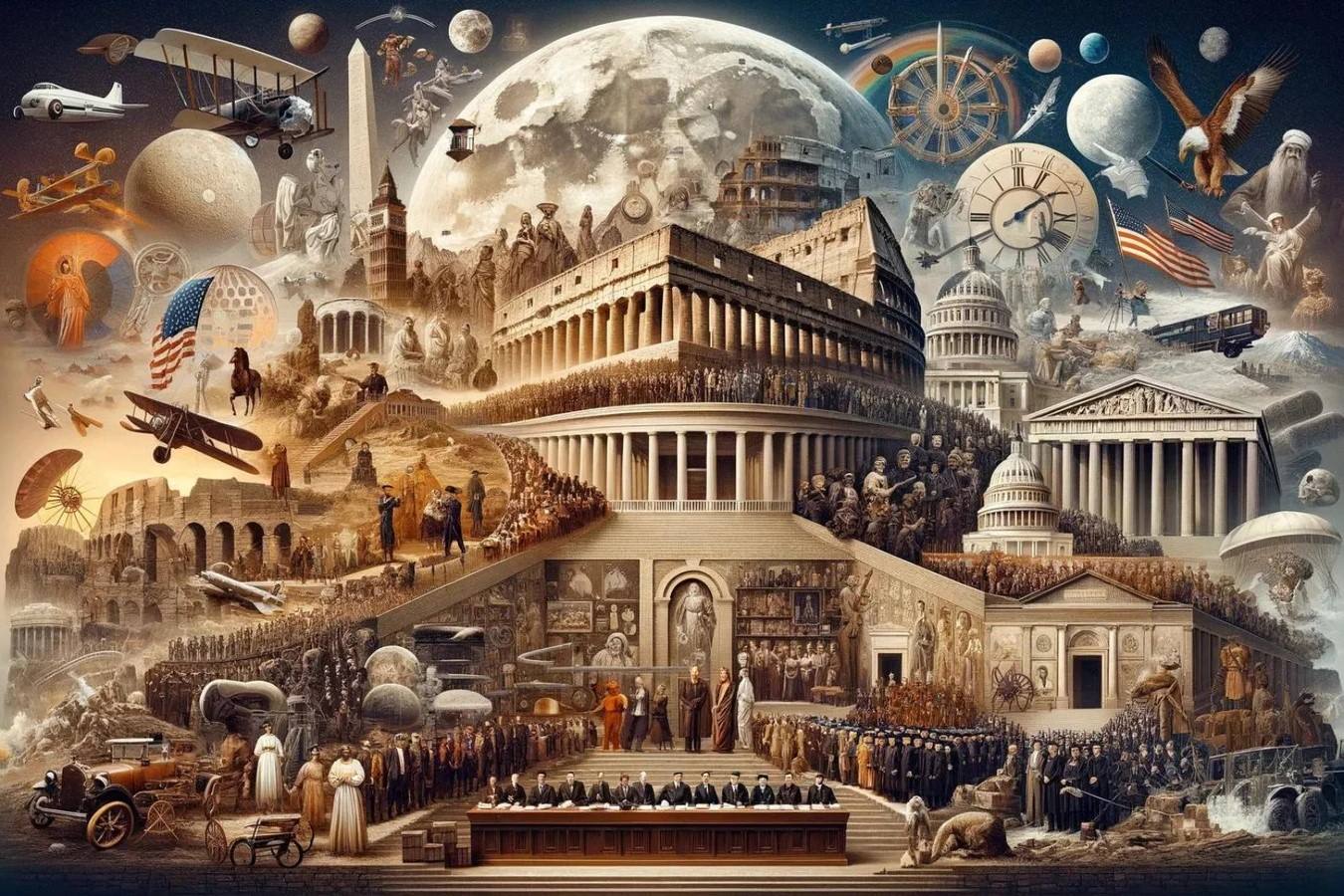
Ever wondered how historical events shaped our world? From ancient civilizations to modern revolutions, history is packed with fascinating stories and pivotal moments. Understanding these events not only helps us appreciate the past but also gives us insights into our present and future. Whether it's the fall of the Roman Empire, the signing of the Magna Carta, or the moon landing, each event has left an indelible mark on humanity. In this blog post, we'll dive into 35 intriguing facts about historical events that have defined eras, changed societies, and influenced the course of human history. Get ready to embark on a journey through time and uncover the stories behind these monumental occurrences.
Key Takeaways:
- Ancient civilizations like Mesopotamia and Ancient Rome made incredible advancements in technology and urban planning, shaping the world we live in today.
- The Renaissance and Age of Exploration brought about remarkable individuals like Leonardo da Vinci and Christopher Columbus, who changed the course of history with their innovations and discoveries.
Ancient Civilizations
Ancient civilizations laid the foundation for modern society. Their innovations, cultures, and histories continue to fascinate us.
- The Great Pyramid of Giza was built around 2580–2560 BC. It remained the tallest man-made structure for over 3,800 years.
- Mesopotamia, often called the "cradle of civilization," saw the invention of the wheel, writing, and the first cities.
- The Hanging Gardens of Babylon, one of the Seven Wonders of the Ancient World, were said to be built by King Nebuchadnezzar II for his homesick wife.
- Ancient Rome had a complex system of aqueducts that transported water from distant sources into the city, supporting over a million residents.
- The Indus Valley Civilization had advanced urban planning, including grid layouts and sophisticated drainage systems.
Middle Ages
The Middle Ages, or medieval period, was a time of knights, castles, and significant societal changes in Europe.
- The Black Death killed an estimated 25-30 million people in Europe between 1347 and 1351, drastically reducing the population.
- Feudalism was the dominant social system, where land was exchanged for military service and labor.
- The Magna Carta, signed in 1215, limited the powers of the English king and laid the groundwork for modern democracy.
- Gothic architecture, characterized by pointed arches and flying buttresses, flourished during this period, with the Notre-Dame Cathedral being a prime example.
- The Crusades were a series of religious wars initiated by the Latin Church to reclaim the Holy Land from Muslim control.
Renaissance
The Renaissance was a cultural rebirth that began in Italy and spread across Europe, marking the transition from the Middle Ages to modernity.
- Leonardo da Vinci was a polymath who painted the Mona Lisa and The Last Supper, and conceptualized flying machines and armored vehicles.
- Johannes Gutenberg invented the printing press around 1440, revolutionizing the spread of information and literacy.
- The Sistine Chapel ceiling, painted by Michelangelo, is considered one of the greatest artistic achievements of all time.
- Nicolaus Copernicus proposed the heliocentric model of the universe, challenging the long-held belief that the Earth was the center.
- William Shakespeare, often regarded as the greatest playwright, wrote timeless works like Hamlet, Romeo and Juliet, and Macbeth.
Age of Exploration
The Age of Exploration saw European powers expand their horizons, discovering new lands and establishing trade routes.
- Christopher Columbus' 1492 voyage led to the European discovery of the Americas, though he believed he had reached Asia.
- Ferdinand Magellan' expedition (1519-1522) was the first to circumnavigate the globe, proving the Earth was round.
- Hernán Cortés conquered the Aztec Empire in 1521, leading to Spanish dominance in the New World.
- The Columbian Exchange refers to the widespread transfer of plants, animals, culture, and diseases between the Americas and the Old World.
- James Cook mapped many Pacific islands and the coasts of Australia and New Zealand during his voyages in the 18th century.
Industrial Revolution
The Industrial Revolution transformed economies from agrarian to industrial, leading to significant technological and social changes.
- The steam engine, improved by James Watt in the late 18th century, powered factories, trains, and ships, revolutionizing transportation and industry.
- Textile manufacturing was one of the first industries to be mechanized, with inventions like the spinning jenny and power loom.
- The Luddite movement saw workers destroying machinery they believed threatened their jobs in the early 19th century.
- Child labor was widespread during this period, with children working long hours in dangerous conditions in factories and mines.
- The Transcontinental Railroad, completed in 1869, connected the eastern and western United States, facilitating commerce and migration.
World Wars
The 20th century was marked by two devastating world wars that reshaped global politics and society.
- World War I (1914-1918) saw the use of trench warfare, chemical weapons, and tanks, resulting in over 16 million deaths.
- The Treaty of Versailles ended World War I but imposed harsh penalties on Germany, contributing to the rise of Adolf Hitler.
- World War II (1939-1945) involved over 100 million people from more than 30 countries, making it the deadliest conflict in history.
- The Holocaust saw the systematic genocide of six million Jews and millions of others by Nazi Germany.
- The atomic bombings of Hiroshima and Nagasaki in 1945 led to Japan's surrender and the end of World War II.
Modern Era
The modern era has seen rapid advancements in technology, civil rights, and global interconnectedness.
- The United Nations was established in 1945 to promote peace and cooperation among nations.
- The Civil Rights Movement in the United States, led by figures like Martin Luther King Jr., fought for the end of racial segregation and discrimination.
- The moon landing in 1969 saw Neil Armstrong and Buzz Aldrin become the first humans to walk on the moon.
- The fall of the Berlin Wall in 1989 symbolized the end of the Cold War and the reunification of Germany.
- The internet has revolutionized communication, commerce, and access to information, becoming an integral part of daily life.
The Final Word on Historical Events
History's full of surprises, isn't it? From ancient civilizations to modern milestones, these historical events shape our world. Knowing these facts helps us understand where we come from and where we're headed. Whether it's the Great Wall of China or the moon landing, each event tells a story of human achievement and struggle.
Learning about history isn't just for school. It's a way to connect with the past and appreciate the present. These 35 facts are just a glimpse into the vast tapestry of our shared heritage. Keep exploring, keep questioning, and keep discovering. History's not just dates and names; it's the story of us all.
So next time you hear about a historical event, remember there's always more beneath the surface. Dive in, and who knows what fascinating facts you'll uncover next?
Frequently Asked Questions
Was this page helpful?
Our commitment to delivering trustworthy and engaging content is at the heart of what we do. Each fact on our site is contributed by real users like you, bringing a wealth of diverse insights and information. To ensure the highest standards of accuracy and reliability, our dedicated editors meticulously review each submission. This process guarantees that the facts we share are not only fascinating but also credible. Trust in our commitment to quality and authenticity as you explore and learn with us.


